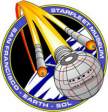 |
 |
Paris-Class Light Cruisers
![]() Diagrams
Diagrams
![]()
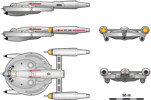 Four views |
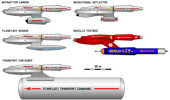 With different pods |
 Deck plans created by Allen Rolfes (see notes) |
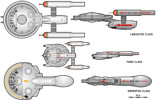 Lancaster era ships |
![]() Scenes
Scenes
![]()
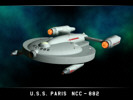 3D scene created by Thomas Pemberton |
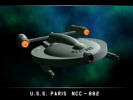 3D scene created by Thomas Pemberton |
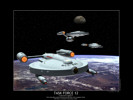 Parises and Lancaster created by Thomas Pemberton |
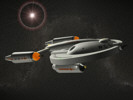 3D scene created by Emil Petrinic |
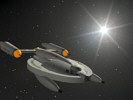 3D scene created by Emil Petrinic |
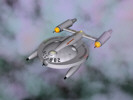 Paris in Nebula created by Emil Petrinic |
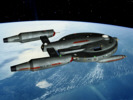 USS Tripoli in orbit by Dávid, mesh by Evil_Genius_180 |
![]() History
History![]()
The Paris-class light cruiser of 2196 entered service only after Starfleet had failed to gain authorization for two other light cruiser classes proposed earlier in the 2190s. However, the final decision to construct the Paris class was not based only upon starship engineering and military necessity. Instead, it involved conflicts over colonization, the growing strength of Humans within the Federation, the proper mission of Starfleet, and the relation of the Federation to other powers in the galaxy.
Growing Opposition to Colonization
In the first 20 years after its founding, the United Federation of Planets (UFP) spread antispinward and coreward into the vacuum created by the retreat of the Romulan Star Empire behind the Neutral Zone. Expansion in other directions had not yet been limited by official contact with such potentially aggressive species as the Klingons, Kzinti, and Nakuru and also proceeded rapidly. Therefore, the Federation began to establish colonial centers, or secondary cores, up to 20 parsecs from the traditional core comprising the homeworlds of its founding members. Most of these colonies were established by settlers from Earth or other Earth colonies. By the 2180s, some secondary cores, such as Libra Colonies, New Iberia, and Zhoudingyi, had begun to rival the Homeworld Core in population and in economic and cultural importance. As their Human populations boomed, these secondary cores served as gateways for colonization of even more remote areas of the galaxy. Despite these achievements, Human colonization was unlikely to continue unopposed forever. When this opposition finally came in the mid 2180s, it came from both inside and outside the Federation.
Opposition to colonization from outside the Federation was inevitable. In the great mania for settling new worlds unleashed by the public availability of matter/antimatter (M/AM)-powered transport vessels, wave after wave of colonization spread outward from the Homeworld Core. The leading edge of colonization eventually reached areas of space claimed by sentient species outside the Federation. While the Federation Council respected the territorial claims of other powers by not authorizing colonization in areas under dispute, the demand for new worlds was so great that Human settlers often illegally established colonies in areas other species considered their own. When such settlers ignored warnings to evacuate, as they often did, their colonies were naturally attacked or even destroyed by alien races in acts they considered self-defense. However, Human settlers often acted as if they had a sacred right to colonize the galaxy and demanded protection from Starfleet whenever and wherever their colonies were threatened by native forces.
As colonies were established farther and farther away from the Homeworld Core, lines of supply and communication became longer and more difficult to maintain and defend. Pirates, both independent and government-sponsored, Human and nonhuman, preyed upon cargo ships and passenger vessels as they travelled in and out of Federation-controlled space on their way to distant colonial worlds. As M/AM reactors became more widely available, even pirates and criminal organizations, such as the Orion Syndicate, began to operate fast, powerful, well-armed ships. Commercial losses through hijacking of raw materials, foodstuffs, chemicals, and manufactured goods often amounted to hundreds of millions of credits per month. Even worse, several shiploads of colonists were killed after being robbed by pirates or were simply slaughtered by aliens trying to prevent colonization. Commercial shipping lines, often owned by extremely powerful industrial combines, sought protection from their mounting losses.
Starfleet, whose upper ranks consisted almost entirely of Human veterans of the Earth-Romulan war, generally supported Human colonization of the galaxy. These officers felt, as did many Humans, that Humans should be allowed to settle upon any uncolonized world in Federation-controlled territory. While their stance stopped short of believing that Humans had a "manifest destiny" to spread across the galaxy, many agreed that even if a planet or system was within another power's sphere of influence but was unexploited or underdeveloped, Humans had the right to settle and make use its resources for peaceful purposes. Indeed, many officers had themselves been born on colony worlds, which had been threatened or attacked by the Romulans in the late war.
Consistent with these views, Starfleet sought to assist Human colonization efforts in several ways. First, starships were reassigned from exploratory missions to colonial duty, meaning they were on station at colonial worlds or on patrol along borders between alien powers and Federation colonies to protect against attacks. Second, Starfleet escorted convoys of colonial transports and cargo ships to and from the Homeworld Core. However, Starfleet officers occasionally stepped outside the legal boundaries of their authority and passed Human colonists classified information on newly surveyed star systems and intelligence reports on nonhuman competitors or military forces. Starfleet officers also ignored illegal colonization of planets for which settlement had not yet been authorized or would never be authorized because of prior claims by non-Federation powers. In several documented cases, Human officers even went as far as to ignore orders from the Federation Council, where Human member worlds were not in the majority, to forcibly evacuate Human colonists from such illegally colonized worlds.
Much as Starfleet assisted colonization, colonization benefitted Starfleet. Fulfilling a duty to safeguard the lives and property of Federation citizens required funds and manpower to construct and operate a greater number of starships, starbases, and other support facilities. (Such construction also benefitted Earth, since most major ship-building companies were based there and could now receive funding from the entire Federation rather than from only the Earth government.) These additional Human and material resources could then be shifted from colonial duty and used to strengthen Starfleet throughout the galaxy. A stronger Starfleet would allow the Federation to deal with other powers from a position of greater strength and with greater confidence. Starfleet officers, as well as many Human politicians, felt that Starfleet should be the most powerful force in known space so that peaceful relations could be achieved and maintained on terms favorable to the Federation.
Such greater confidence in dealing with foreign powers was exactly what the Vulcans, and other pacifist races, feared most. They predicted that such confidence would eventually lead to arrogance and a dangerously aggressive foreign policy. These races, of course, also desired a secure, peaceful galaxy, but felt, according to the old Vulcan proverb, "Peace should not depend on Force." The Vulcans knew all too well from their own history that force could indeed produce peace, but only at high cost and with the constant threat of war in a climate of suspicion, paranoia, and fear. In addition, the Vulcans knew how a fragile peace between large coalitions of nation-states on Earth had been enforced in 20th and 21st centuries only through the threat of nuclear holocaust. The Vulcans feared that a Human-dominated Federation would, either by accident or by design, enter into a similar "balance of terror" with an alien adversary. Instead of depending on force, peace must, the Vulcans believed, depend on negotiation, mutual respect, and the rule of law.
While the Vulcans admired Humanity for its boldness, energy, and drive, they also felt Humans were brash, impatient, and impudent. Unlike the long-lived Vulcans, the perpetually fertile Humans reproduced themselves at a truly alarming rate and threatened to overwhelm other members of the Federation through sheer force of numbers. Therefore, it was no surprise to the Vulcans that Humans had a penchant for establishing settlements on every speck of marginally inhabitable rock identified by Federation survey ships. Vulcans often said privately that Humans were spreading across the galaxy much as a cancer metastasizes throughout a body.
Vulcans believed that Human domination of the Federation was undesirable, albeit inevitable. In particular, they believed that Human control of Starfleet would turn the Federation into a organization defined largely by its military actions and destined to be in eternal conflict with its neighbors. Furthermore, since Starfleet encouraged and supported Human colonization, often illegal and often in areas adjacent to or even claimed by other powers, conflict was certain to increase in the coming years. The Vulcans saw colonization and its support by Starfleet creating a cycle of ever-increasing galactic conflict: colonization lead to conflict, which required a strong Starfleet, which encouraged a bolder Federation, which again increased colonization and conflict. Therefore, the Vulcans concluded that a stable, enduring peace in the galaxy would require constraints upon reckless expansion through Human colonization and the Human-dominated Starfleet. Otherwise, the Federation was destined to continue to expand and become mired in a state of perpetual military conflict. An added danger was that the rapidly expanding Federation might eventually challenge or attract the attention of an alien species even more powerful and aggressive than Humanity.
By 2185, these views were shared by a surprisingly high number of Federation members, who were also beginning to chafe under the Human dominance of Starfleet and the Federation. Many of these races had been part of the galactic community for centuries and resented being dictated to by the powerful, upstart Humans. Indeed, several of these races had even considered withdrawing from the young Federation rather than be treated as junior members by Earth. However, the Vulcans persuaded them to remain, arguing that the dangerous ambitions of Humans could be best controlled from within the Federation.
Starting in the late 2180s the Vulcans and their allies sought to restrain Starfleet military programs and colonization. Led by Skon, Vulcan's Ambassador to the Federation, they attempted to impede the growth of colonization by slowing the public release of planetary survey information and the approval of colonization permits. (Ironically, Skon was the grandfather of Spock, whose storied Starfleet career included long years serving as first officer and later captain of the legendary Constitution-class USS Enterprise, NCC-1701.) They also attempted to limit funding for the construction and maintenance of ships and starbases to support either new colonization or the defense of existing colonies. However, they did not attempt to restrain Starfleet's scientific activities, which they wholeheartedly supported despite its indirect aid to colonization.
These efforts of the Vulcans earned them the animosity of Humans and other Federation races pursuing colonization. These races argued that if the Vulcans themselves were not interested in colonization, they should simply step aside and allow other Federation members to do as they pleased. Supporters of colonization argued that it had brought unprecedented prosperity to the Federation. However, they refused to acknowledge any danger to the Federation from continued expansion and certainly none from a stronger Starfleet. Humans, in particular, were extremely proud of their accomplishments. In less than a century after achieving warp flight, Humans technology had equalled, then surpassed, Vulcan technology by almost any measure. Just in the last 20 years, Humans had won an interstellar war against a spacefaring race as old as the Vulcans and become the core and the shield of a galactic union with a hundred billion citizens. They resented what they perceived as attempts by envious Vulcans to prevent Earth from further increasing its technologic and economic superiority. They also accused the Vulcans of putting the lives of Federation citizens in danger and politicizing the necessary defense of the Federation from aggressive alien species.
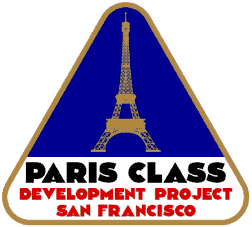
Starfleet Seeks a New Light Cruiser
Because of overt and latent antihuman sentiment in the Federation Council and emerging recognition of the possible dangers of colonization, Skon and his allies were able to successfully block construction of several proposed starships, including the Montana class in 2190 and the Cheyenne class in 2192. Both classes were unfairly characterized as overly aggressive warships with no roles other than colonial defense or offensive operations. In fact, they were developments of 2184's Gagarin class with more powerful engines and weaponry. Despite their relatively large size (displacing approximately 60,000 t), these ships were only intended as auxiliary colonial defense ships and fleet cruisers for use until the construction of a projected new class of large cruisers, which would replace the Moskva class sometime after 2200. However, Montana and Cheyenne were considered threatening because of their apparent specialization for military roles. Their upgraded weaponry included additional missile tubes (one more than Moskva and two more than Gagarin) that were built directly into their hulls, sacrificing space that might have been used for exploratory and scientific equipment. These missile tubes could not be removed, and the ships could not easily be reconfigured for other missions. Although Starfleet was able to maintain appropriations for fleet support and training, it realized after the bitter losses of the Montana and Cheyenne classes that a new ship-procurement strategy was needed.
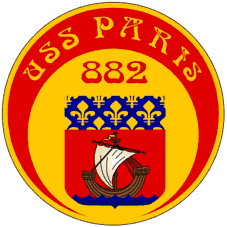
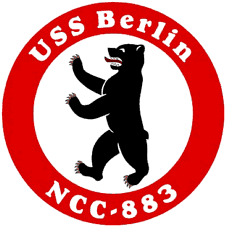
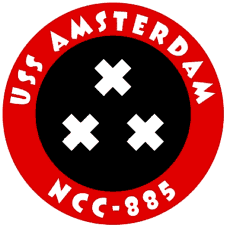
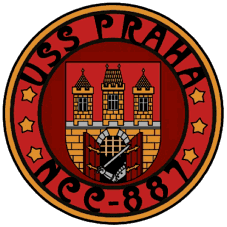
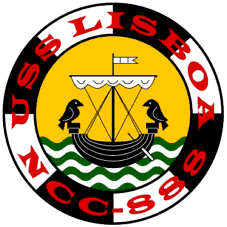
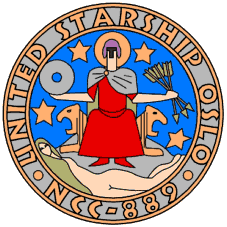
Starfleet decided that the only way to win authorization for a new colonial defense/fleet light cruiser in the present political climate was to not propose a warship or, more accurately, to propose a warship that did not appear to be a warship. Because the Vulcans still allowed new ships to be constructed for exploration and basic defense needs (such as the Gagarin and Hyperion classes), Starfleet's plan was to propose a ship that, in its basic configuration, appeared to be a nonthreatening cruiser equally well suited for exploration or light defensive roles. As a result, the basic structure of the Paris class, proposed in 2194, was extremely unspecialized, with built-in weaponry (a single missile tube and no laser cannons) less powerful than that of Moskva (or the proposed Montana and Cheyenne classes) and similar to that of Gagarin. The strength of the ship would lie in its ability to accept mission-specific equipment modules, such as for weaponry and sensors, that could be quickly attached and detached to reconfigure the ship as needed.
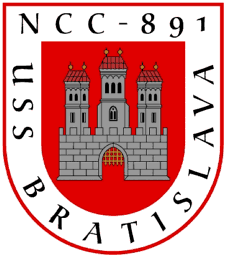
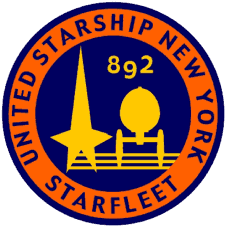

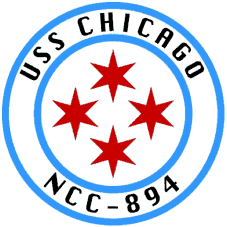
Because of Paris's unspecialized design and modest weaponry, the anti-colonization faction in the Federation Council could provide no valid reason to withhold funding, other than the rather weak assertion that most Gagarin class ships were less than ten years old. Furthermore, Starfleet emphasized the ability of Paris to be easily reconfigured for a variety of scientific missions, which the Vulcans found difficult to refute. After funding was authorized in a close Council vote, the Ship Specifications Review Board requested contractor proposals, from which that submitted by the Shimata-Dominquez Corporation of Manila was selected. Shimata-Dominquez's experience with the Paris class would help it win the highly coveted contract for the Lancaster-class heavy cruiser in 2203.
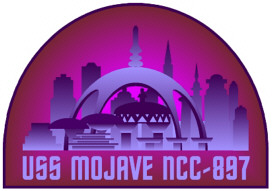
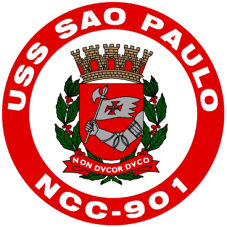
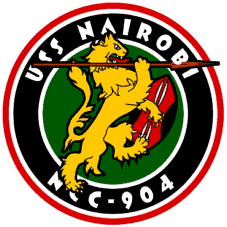
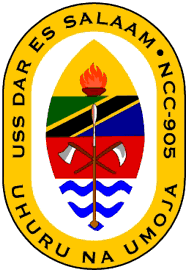
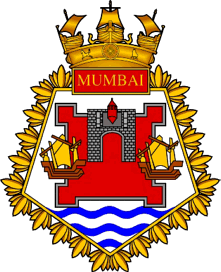
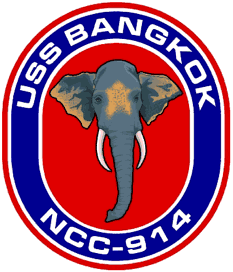
The basic layout of the winning design for Paris was quite novel and was intended to combine excellent performance at warp and impulse speeds with outstanding load-carrying ability. The shape of the primary hull was based on recent advances in warp field dynamics which suggested that narrowing the leading edge of the forward warp-field lobe both laterally and vertically would decrease energy requirements for speeds above wf 4.5. The primary hull comprised a 62 × 68-m straight-sided disk, 5 m tall and slightly narrowed at the front. Below and above the disk were oval mounds offset forward of the disk's center. This was done to clear space astern for the impulse deck and fusion reactor, which were extremely large to power auxiliary equipment and to provide outstanding sublight performance. The raised bridge module was placed even further forward, less than 10 m from the disk's leading edge. The uncovered lateral "wings" of the primary hull disk housed mostly crew spaces and storage compartments to allow easy refit as new equipment became available. The ventral surfaces of these wings had external hardpoints for equipment attachment. The navigational deflector was mounted in the primary hull, directly in front of the bridge module. Built-in weaponry was limited to four laser turrets and a single projectile tube in the ventral primary hull.
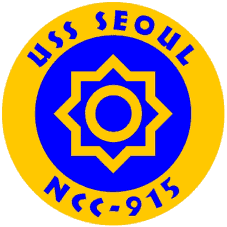
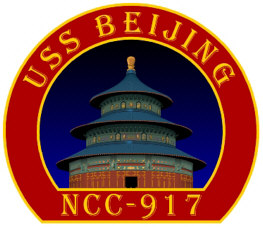
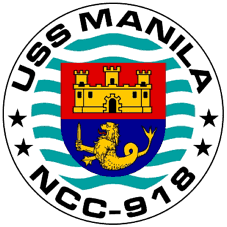
To allow large equipment modules to be hung below and behind the primary hull, the secondary hull, which was usually in this location, was attached directly to the top and rear of the primary hull. The secondary hull continued forward as a long dorsal spine nearly to the front of the primary hull. The shuttlebay, which was smaller than that on Gagarin thanks to the recent introduction of cargo-rated matter transporters, opened dorsally and was located in the dorsal spine forward of the impulse deck. The newly developed compact SSWR-VI M/AM reactor was placed horizontally in the far rear of the secondary hull. The warp nacelles, twin Energomash Cyclone units, were outboard of the warp core on 22-m-long horizontal supports.
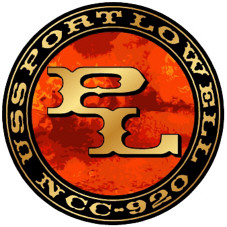
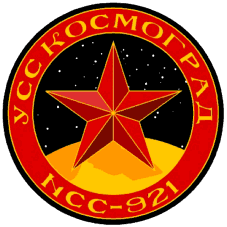
Service History
The lead ship of the class, USS Paris (NCC-882), joined Starfleet in 2196 and was immediately assigned to colonial duty in the Rigel Sector. Although the anti-colonization faction in the Federation Council was predictably outraged, it could do little more than swear retribution as Starfleet Command retained near complete independence with regards to ship deployment. In addition to colonial defense duties, Paris-class ships would later join task forces centered around Lancaster-class heavy cruisers or Swordfish-class carriers. Starfleet doctrine in the early 23rd century was based largely on the experiences of the Earth-Romulan War and aimed to concentrate large numbers of ships to engage enemy fleets in decisive combat. The fast, stealthy Paris-class ships were assigned to provide reconnaissance and defend task forces against enemy scouts and other small craft. The new SSWR-VI reactor allowed Paris to easily keep pace with Lancasters moving at flank speed.
Although the Paris class's suggested usefulness for scientific duties was intended to mask its intended military duties, Paris-class ships did prove extremely useful in a variety of peaceful roles. Their ability to carry many different types of equipment, both military and scientific, meant that Paris-class ships were always in great demand. In their early years of colonial service, Paris-class ships typically carried large, dual laser- or phaser-cannon pods on their lateral wings to compensate for their relatively weak standard weaponry. The cannons were either powered by the ship's fusion reactor or, more typically, by replaceable in-pod M/AM fuel cells similar to those carried by Starfleet fighter craft before 2230. The centerline hardpoint could be used for a wide variety of bulky equipment, including larger cannons; launchers for missiles, photon torpedoes, or sensor drones; bays for fighter and shuttle operations or transport; specialized long-range active and passive sensors; electronic countermeasure pods; sample-collection chambers; tractor-beam generators; long-range subspace radio transmitters; fuels; auxiliary reactors; and personnel or cargo transport containers.
One of the more unusual weapons carried by Paris-class starships was the antimatter cannon. It was powered by a small, specialized tokamak fusion reactor that used 100% anti-deuterium as fuel. Aside from the intricacies of feeding AM into the reactor, it functioned identically to a standard fusion reactor. The cannon functioned by collecting AM plasma in an accumulation chamber just forward of the fusion reactor. When the cannon was fired, the plasma was discharged through an acceleration tube through the front of the weapon, directed by a containment beam fired concurrently to aim the plasma stream. The actual energized state of the plasma was very low, because the effectiveness of the weapon was derived from the AM nature of the plasma. The cannon was simply a very early method of delivering AM to a target.
However, there were several practical constraints limiting the usefulness of the weapon. First, like its distant cousin, the Romulan plasma cannon, it was a purely sublight weapon, and could not be used while the firing ship was at warp, or accurately targeted against ships traveling at warp. The cannon also required a great deal of AM to create effective explosive discharges against shielded targets. Finally, the weapon had a very short range, much lower than contemporary missiles or even early phasers. Despite the projected containment beam, the AM would still disperse quickly. Quick-thinking commanders could use this weakness as an advantage against large, unshielded targets, because the dispersed plasma could do lesser but still notable damage against a much greater area. However, even weakened deflector shields were capable of deflecting low-intensity plasma. Because of these limitations, the AM cannon was only useful for a very short period in Starfleet history. By 2215, the photon torpedo entered service; it was a more effective method of delivering AM to a target, while providing for a much more powerful, yet controlled, explosive reaction.
Before its retirement from frontline service in the early 2230s, the Paris class witnessed many changes in the role of Starfleet. After the death of Ambassador Skon in 2208, active resistance to a stronger Starfleet crumbled owing to popular support for colonization and increased attacks on Federation colonies by the Kzinti, the Klingons, and other powers. As the pacifists had feared, Starfleet grew stronger and supported the imperialist tendencies of the age. Paris-class ships participated in most fleet actions in those years, accompanying Lancaster heavy cruisers or Swordfish carriers. When Starfleet doctrine changed to a peripheral basing system with the Command Directive of 2221, Paris-class ships adapted easily to their expanded roles in the new defensive scheme. However, by the late 2220s, even the famous adaptability of the Paris class was reaching its limits as more powerful equipment was needed to deal with the new alien threats. Luckily, Kestrel-class light cruisers had entered the fleet in large numbers by this time, allowing Paris-class ships to assume secondary roles. The last Paris-class cruiser withdrawn from service was USS Port Lowell (NCC-920), which was retired in 2261.
The Paris-class light cruiser USS Damascus (NCC-910), a participant in actions at Garner 441, Bisei-Shinnihon G, and Lisyk VIII, has been restored to its original configuration and is on display at the Starfleet Museum.
![]() Commissioned Ships
Commissioned Ships![]()
| USS Paris NCC-882 USS Berlin NCC-883 USS Madrid NCC-884 USS Amsterdam NCC-885 USS Roma NCC-886 USS Praha NCC-887 USS Lisboa NCC-888 USS Oslo NCC-889 USS Kiev NCC-890 USS Bratislava NCC-891 USS New York NCC-892 USS Houston NCC-893 USS Chicago NCC-894 USS Miami NCC-895 USS Toronto NCC-896 USS Mojave NCC-897 USS Havana NCC-898 USS Rio de Janeiro NCC-899 USS Santiago NCC-900 USS São Paulo NCC-901 |
USS Tripoli NCC-902 USS Lagos NCC-903 USS Nairobi NCC-904 USS Dar es Salaam NCC-905 USS Karachi NCC-906 USS Delhi NCC-907 USS Teheran NCC-908 USS Baghdad NCC-909 USS Damascus NCC-910 USS Amman NCC-911 USS Jerusalem NCC-912 USS Kabul NCC-913 USS Bangkok NCC-914 USS Seoul NCC-915 USS Shanghai NCC-916 USS Beijing NCC-917 USS Manila NCC-918 USS Tycho City NCC-919 USS Port Lowell NCC-920 USS Cosmograd NCC-921 |
![]() Specifications*
Specifications*![]()
Standard displacement: 30,100 mt
| Overall | 1° Hull | 2° Hull | Nacelles | |
| Length [m] | 129.56 | 71.48 | 73.43 | 60.77 |
| Beam [m] | 75.50 | 62.02 | 13.30 | 11.70 |
| Draft [m] | 21.96 | 17.52 | 9.17 | 11.70 |
Crew complement: 93 (15 officers + 78 crew)
Weapons: 4 Type VII laser turrets (4 × 1 mounts), 1 probe/missile launcher with 12 Lance missiles
Embarked craft: 3 personnel shuttlepods
Warp drive: SSWR-VI-A spherical cavity M/AM reactor with 2 Cyclone nacelles
Velocity: wf 4.6, cruise; wf 5.8, supercruise; wf 6.0, maximum
Units commissioned: 40